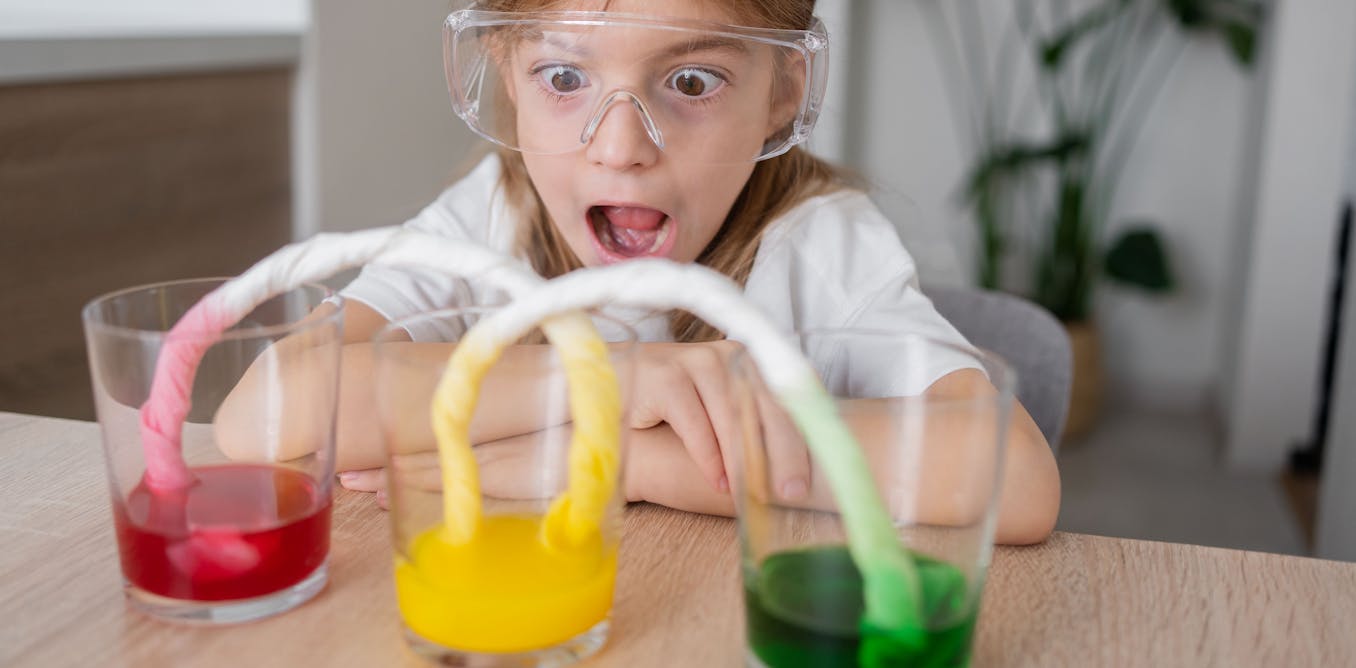Many people believe that science is difficult and requires special equipment, but that’s not true.
Science can be explored at home using everyday materials. Everyone, especially children, naturally asks questions about the world around them, and science provides a structured way to find answers.
Misconceptions about the difficulty of science often stem from not knowing its fun and exciting side. Science can be as simple as observing nature, mixing ingredients or studying the properties of objects. It is not just for experts in white coats, but for everyone.
Don’t take my word for it. Below are three experiments you can do at home with elementary school-aged children and older.
Extracting DNA from bananas
DNA is all the genetic information in cells. Every living thing has DNA, including bananas.
Did you know that you can extract DNA from banana cells?
What you need: ¼ ripe banana, Ziploc bag, salt, water, dish soap, rubbing alcohol (from the pharmacy), coffee filter paper, stirrers.
What you do:
-
Add a pinch of salt to about 20 ml of water in a cup.
-
Place the salt water in the Ziploc bag with a quarter of a banana and mash the banana with the salt water in the bag with your hands. Mash the banana to separate the banana cells. The salt water helps clump the DNA together.
-
Once the banana is well mashed, pour the banana and the salt water into a coffee filter (you can put the filter in the cup you used to prepare the salt water). Filtering will remove the large clumps of banana cells.
-
Once a few ml have been filtered out, add a drop of dish soap and swirl gently. Dish soap breaks down the fats in the cell membranes, which separates the DNA from the other parts of the cell.
-
Slowly add some rubbing alcohol (about 10 ml) to the filtered solution. DNA is insoluble in alcohol, so the DNA will clump together outside the alcohol and float, making it easy to see.
-
DNA begins to precipitate and looks slightly cloudy and threadlike. What you see are thousands of strands of DNA – the strands are too small to be seen even with a regular microscope. Scientists use powerful equipment to see individual strands.
Learn how plants “drink” water
What you need: celery sticks (with leaves), glass or clear cup, water, food coloring, camera.
What you do:
- Fill the glass ¾ full with water and add 10 drops of food coloring.
- Place a celery stalk into the glass of colored water. Take a photo of the celery.
- Photograph the celery at the same time every day for two to three days. Be sure to take a photo right at the beginning of the experiment.
What is happening and why?
All plants, such as celery, have vertical tubes that act as a transport system. These narrow tubes draw in water using a phenomenon known as capillarity.
Imagine you have a thin straw and you dip it into a glass of water. Have you ever noticed that the water rises a little up the straw even though you are not sucking on it? This is due to capillarity.
In plants, capillarity helps transport water from the roots to the leaves. Plants have tiny tubes inside them that look like thin straws called capillaries. Water sticks to the sides of these tubes and rises to the top. In your experiment, you will see how the food coloring in the water travels to the leaves.
Build a balloon-powered racing car
What you need: tape, scissors, two skewers, cardboard, four bottle caps, a straw, a balloon.
What you do:
- Cut the cardboard to about 10cm long and 5cm wide. This will form the base of your car.
- Make holes in the middle of four bottle caps. These will be your wheels.
- To make the axles, insert the wooden skewers through the holes in the cap. You will need to cut the skewers to match the width of the cardboard base, but leave room for the wheels.
- Attach the wheels to the skewers with tape.
- Tape the axles to the bottom of the vehicle floor and make sure the wheels can rotate freely.
- Insert a straw into the opening of a balloon and secure it with tape to ensure no air leaks out.
- Attach the other end of the straw to the top of the base of the car, positioning it so that the balloon can inflate and deflate towards the back of the car. Secure the straw in place with tape.
- Inflate the balloon through the straw, squeeze the straw to hold the air, place the car on a flat surface, and then release the straw.
What is happening and why?
The inflated balloon stores potential energy when it is inflated. When the air is released, Newton’s third law of motion comes into effect: for every action there is an equal and opposite reaction.
As the air escapes from the balloon (action), it pushes the car in the opposite direction (reaction). The escaping air propels the car forward and causes it to glide across the surface.




